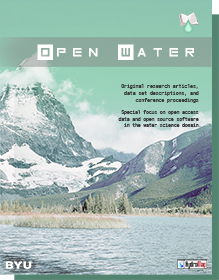Article Title
Abstract
Detailed hydrodynamic models that solve the full de Saint-Venant equations play a crucial role in support of river engineering, management and integrated catchment modelling. They explain the current state of a river system, and are useful for various types of scenario investigations. However, detailed physically-based models show two major disadvantages. Due to the long calculation times, simulations have to be limited both in time and space. Applications involving numerous simulations, such as global optimization problems at catchment level, real time control applications and uncertainty analyses, cannot be performed. Secondly, the coupling of models created in different software environments can be cumbersome.
BYU ScholarsArchive Citation
Wolfs, Vincent; Meert, Pieter; and Willems, Patrick
(2013)
"CMD: a semi-automatic model structure identification and calibration tool for river water quantity modelling,"
Open Water Journal: Vol. 2:
Iss.
1, Article 24.
Available at:
https://scholarsarchive.byu.edu/openwater/vol2/iss1/24
